Teperberg has been on a journey of sorts over the last 15 years or so. Since Shiki Rauchberger took over in 2002, the winery has been transformed from a medium sized winery producing mediocre wines to one of Israel’s largest – producing professionally made wines through and through. In 2006 Olivier Fratty joined the team and, within a couple of years, helped move the winery into a more old-world style that was evident through the 2013 vintage. In my humble opinion, this was the winery’s heyday. Since 2014, following the lead of GHW, Teperberg has pursued a more new-world style. While personally I find less to like these days than I used to, one cannot argue with this strategy’s success in terms of sales. Teperberg is now Israel’s third largest winery producing more than five million bottles a year.
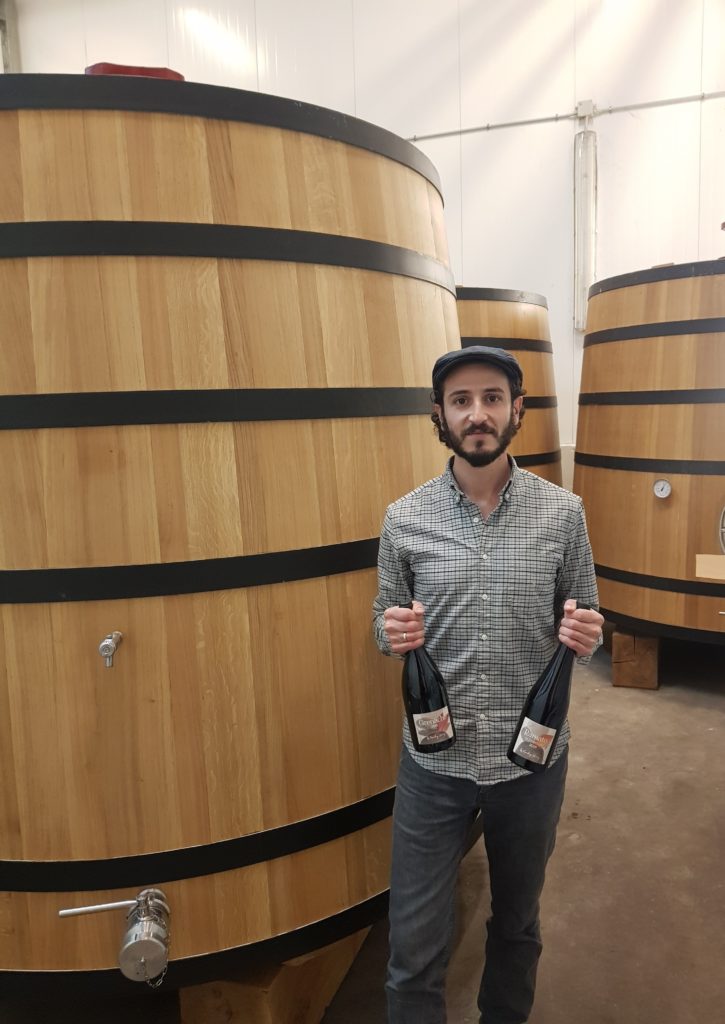
In 2016, Dani Freedenberg joined the winemaking team. As with Olivier before him, it has taken a couple of years, but his addition is now bearing fruit in a pretty direct way. Teperberg is now releasing two wines that have been personal projects of Dani’s and have even listed Dani as the winemaker. The wines are a 2019 Grenache and 2019 Ramato of Pinot Gris. Besides the whimsical new labeling, both of these wines share many characteristics. They both are harvested by hand and are minimal-intervention wines that have spent 10 months in a barrel. But most importantly, these wines have a boutique feeling about them – as if they are not a part of the standard lineup or style that Teperberg is currently selling. It is almost like a small boutique line within the winery. This is an idea that I understand Teperberg has entertained in the past, ultimately deciding to focus on the primary brand and make any shifts in style in a uniform manner – until now. These wines are experimental and work well when viewed as a unit separate from the rest of Teperberg’s portfolio. In fact, the branding lets you know that. Rather than put the winery name up front, these wines stand apart and just have a “by Teperberg Winery” at the bottom of the label – with no Teperberg logo. I tasted these wines outdoors at Crave in Jerusalem. While the food is always yummy, I don’t really find it possible to take accurate notes on the nose of any wine in that setting. I am basically smelling the shuk and the food, so I didn’t bother including those notes here.
2019 Grenache by Teperberg Winery – This wine was grown in Mevo Choron and made from grapes grown in an open canopy style of vineyard. Canopies – as one would guess — primarily provide shade and shelter for the grapes. Grapevines require enough leaf area and shade to allow the fruit to ripen at the correct pace (in other words not too quickly), without the canopy being so dense that the fruit is prevented from getting enough sun. An open canopy style allows for good leaf and fruit exposure to the sun, better exposure to air to keep the grapes cool and disease free, and helps prevent mildew – while still increasing the overall shelter and shade. The end result should be a fresher tasting wine. I have no idea whether or not any of that contributed to the end product – I’m not an agronomist. What I can tell you is the wine tastes fresh and light. More than the open canopy style of growth, I would guess that this is because, rather than fight against the grape, the winemaker decided to lean into all of the things that winemakers usually find problematic with the varietal. Grenache is very thin skinned and is a low phenol, low tannin grape. Winemakers usually do all that they can to combat this – trying to extract as much color and tannin out of the grape as possible, by aggressively pressing the wines and then using new oak to provide further tannic structure and retain as much of the color as possible. Here Dani has (seemingly purposefully) ignored all of that. The wine did not go through a crusher. They were pressed only during punch down by hand during fermentation. Neutral oak was used rather than new oak. All of this resulted in a wine that is the opposite of what most winemakers would try to put out. But, if you forget about your preconceived notions of what you think you would expect, you get really nice drink-now wine with bright acidity and fresh red fruit, mostly raspberry and strawberry with a little bit of spice. No it doesn’t have any real depth, nor does it have any structure to suggest that the wine will last more than a year or two – but I can see this wine being a wonderful Israeli summer wine for when someone wants a red but wants something really light to have with dinner outside on the porch. It certainly would go great with poultry and lighter fare and even a nice charcuterie plate. Whereas most Grenaches come in northwards of 14.5% abv, this has just 12.5%! Will this wine be for everyone? I don’t know – probably not. There are those who are going to be dismissive of the wine because of the seemingly contrary direction that Dani took it. But I see a place for it – and who knows – it may surprise me and gain some depth as it ages – it’s very hard to tell obviously as this wine has no track record to speak of. The slight quibble I have here is with the price. I would really have liked to see this wine come in in closer to the NIS 55 – NIS 65 range. Hey I wouldn’t be me if I didn’t bitch about price. But NIS 80 is where it’s at – and that’s not too horrible.
2019 Ramato of Pinot Gris by Teperberg Winery – Ramato is style of wine which is made in Italy of Pinot Grigio. Pinot Gris is essentially the same grape by a different name. The Ramato style employs skin maceration to extract color (and tannin) from the grape. In most white wines, this will result in a deep yellow – or with some aging, an orange hue. With Pinot Grigio, because of the skins’ darker pigmentation, Italian Ramato has a copper color (the word for copper in Italian is Ramato). Israeli Pinot Gris is a deeper purple than Italian Pinot Grigio. This results in a reddish rather than copper color. As far as I know, this is the only kosher Ramato currently produced. Just before tasting this, I tasted the 2019 Teperberg Essence Pinot Gris. Same grape, same vineyard in the Judean Hills (Kfar Etzion) – just made in the standard way. In general Pinot Gris is not a grape that I think Israel does well. It’s usually too sweet for me here. When you combine that with the tropical fruit flavors that usually come with, you end up with something I am not into. The white Pinot Gris does not suffer from the sweetness issue – so the tropics are held in place. It does however have the problems I associate on the whole with the 2019 vintage – there is a hole in the mid-palate that simply shouldn’t be there, and there is something lacking in the body. It’s not as bad as some other from 2019, but it doesn’t quite make it. The Ramato, unsurprisingly, fixes the vintage issues – and quite frankly improves the Pinot Gris profile on the whole. First in terms of the 2019 issues, giving the wine extended time on the skins (7 days – relatively short of Ramato) tightens it up – so you simply don’t have that hole in the middle, and, because of the tannin, you don’t get that wateriness. This has been proven true of other wines of this vintage that have either undergone barrel aging, skin maceration, or have sat on the lees. These wines have a better chance of avoiding the pitfalls of 2019. In the mouth, the tannin is naturally present – but not at all overwhelming and provides some welcome bite. The flavor profile is also greatly changed here from the standard Pinot Gris. Gone are tropics. Instead, you get some pomegranate, tart raspberry, and even a little bit of earth. There is also some mineral there in the background. Very nice indeed. The wine comes in at 13.5% and also would pair well with poultry, veal, and even some charcuterie. This wine also sells for NIS 80 – and here, I think it’s warranted.
As you can see from reading the notes above – there is a lot of commonality in these wines. You can see a clear style that the winemaker wants to move towards. It certainly is a departure from the standard fare we get from Teperberg – and IMHO they should be lauded for giving wines like these a chance. Currently each of these wines was made with VERY limited production. Four barrels of the Grenache, resulting in approx. 1200 bottles and just half of that for the Pinot Gris. These wines are only available through the winery directly by contacting the winemaker at danielf@teperberg1870.co.il.
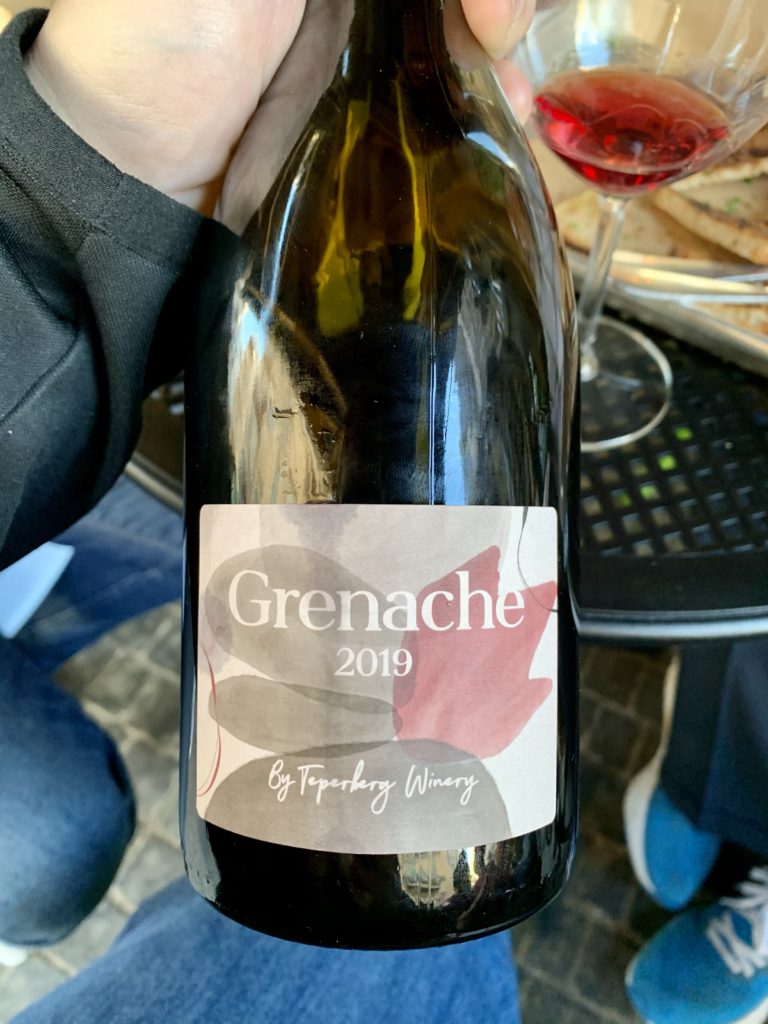
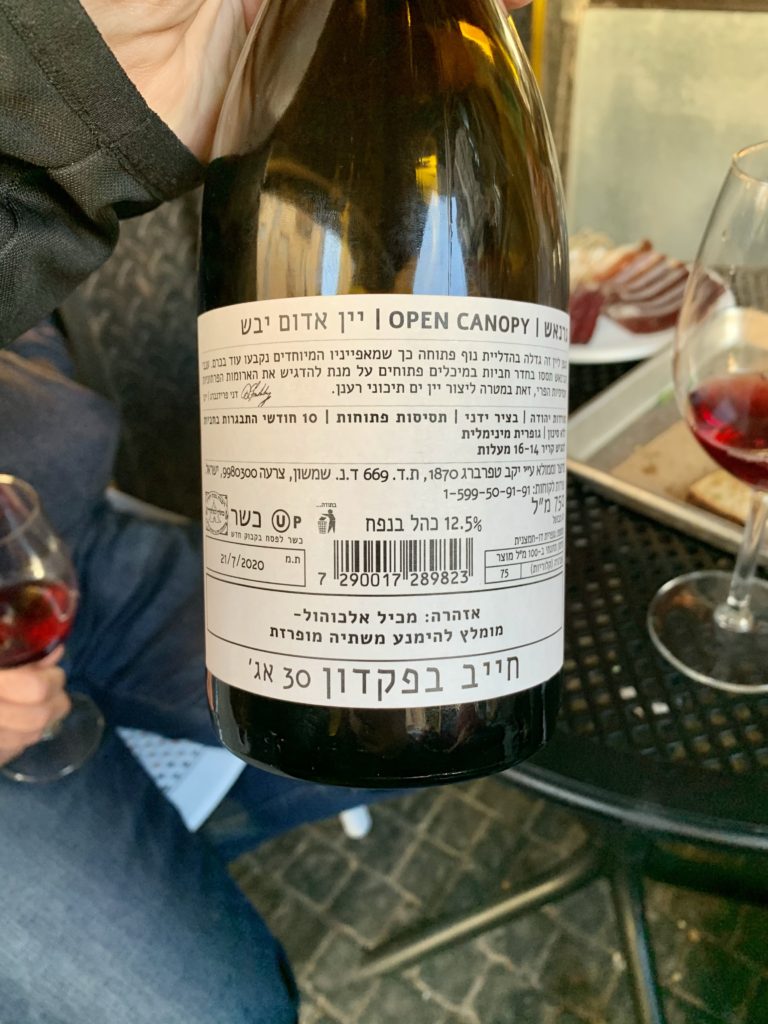
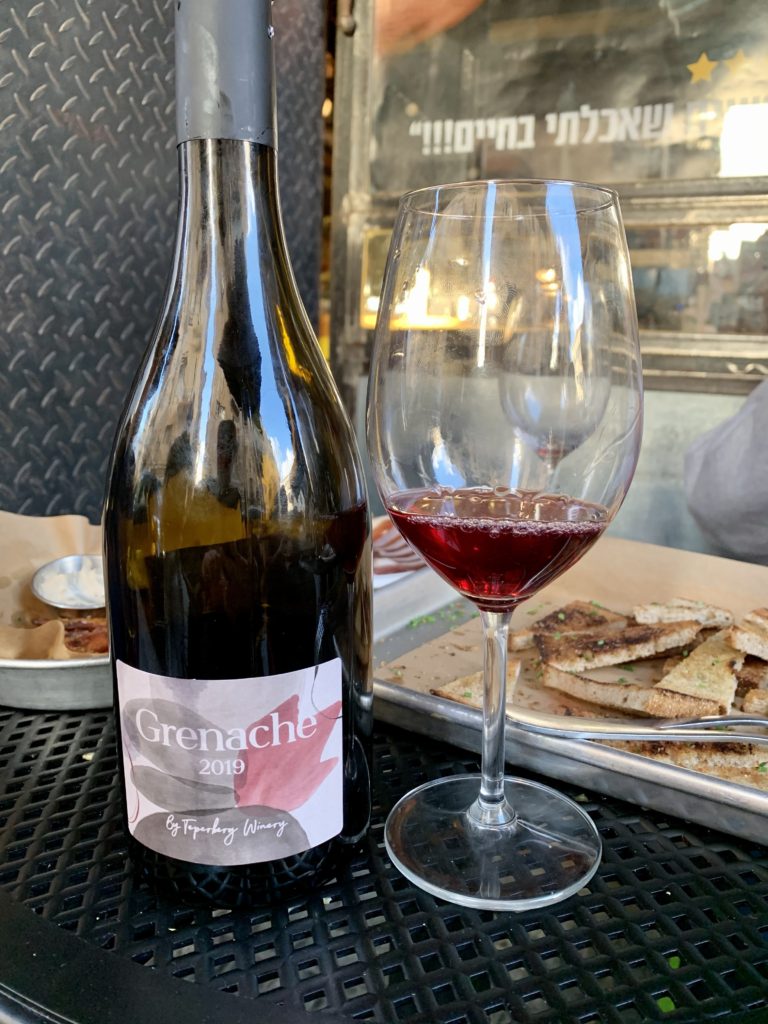

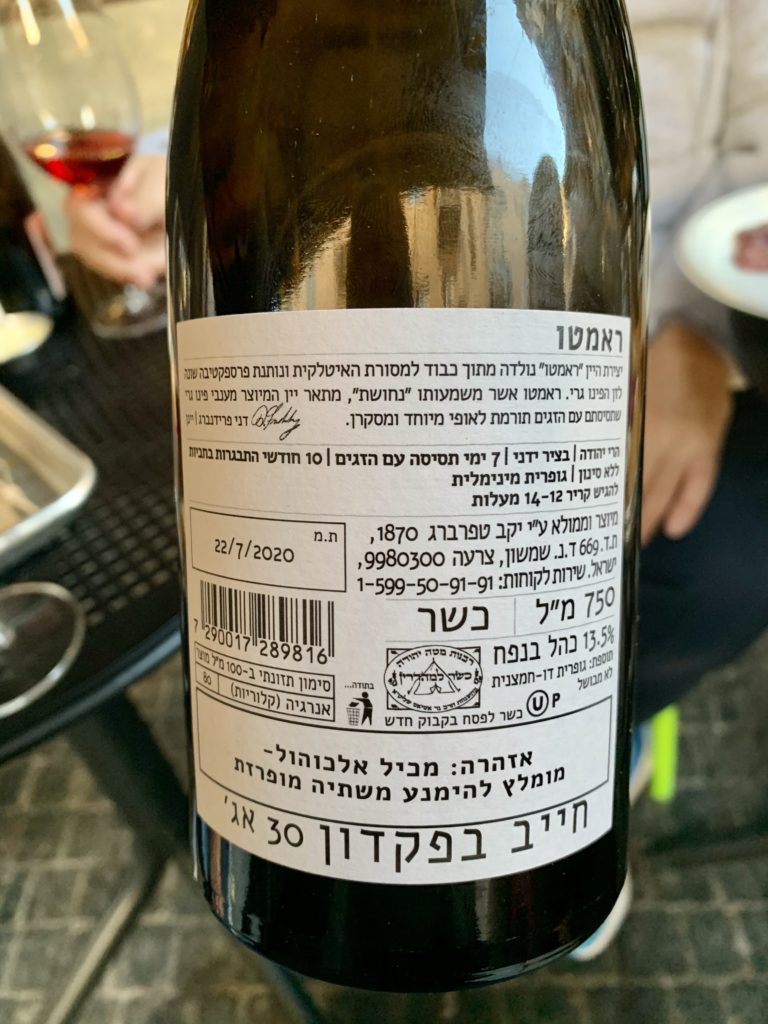
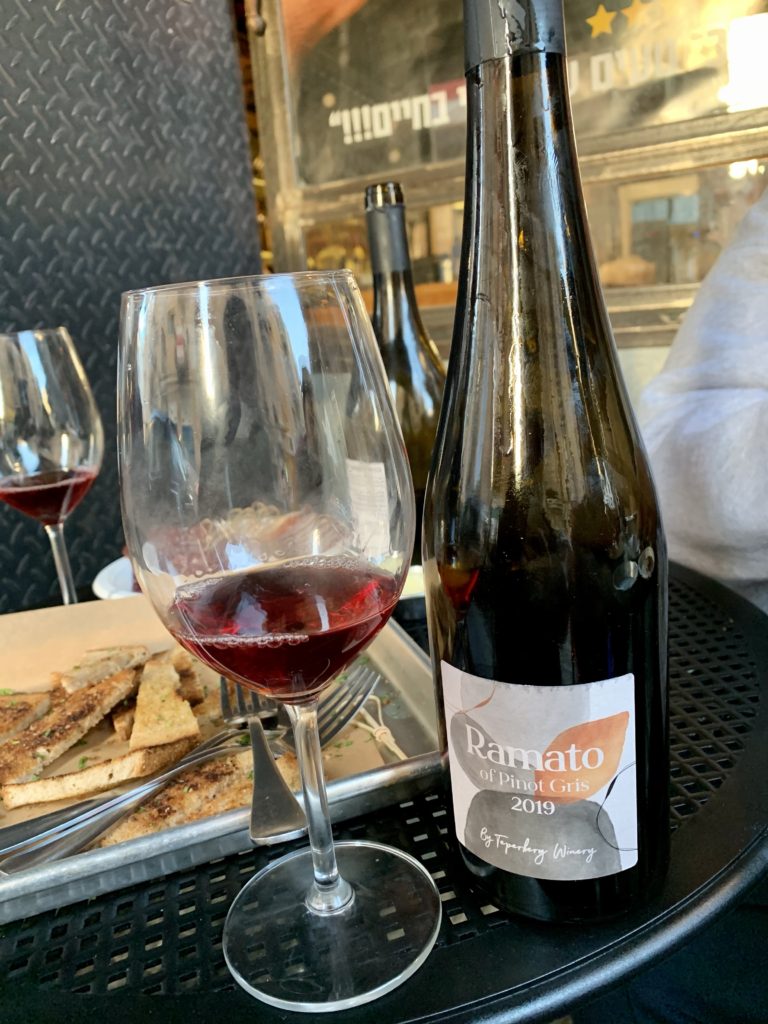
Pingback: Teperberg Winemakers and their Wines - Kosher Wine Unfiltered